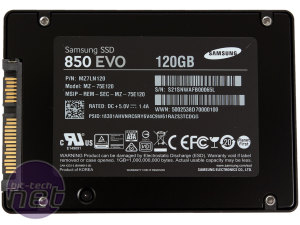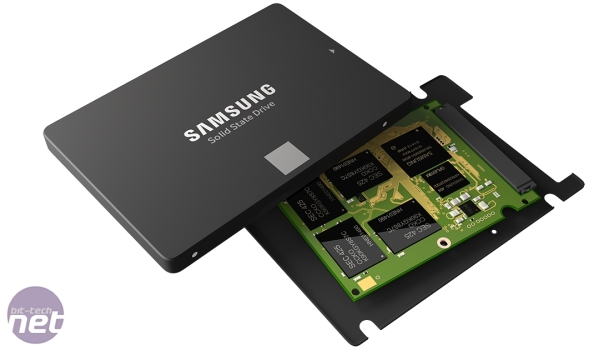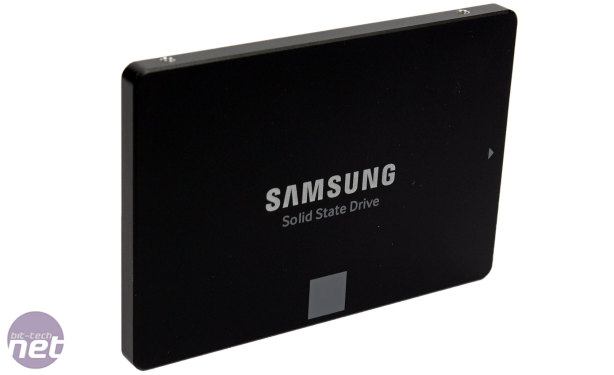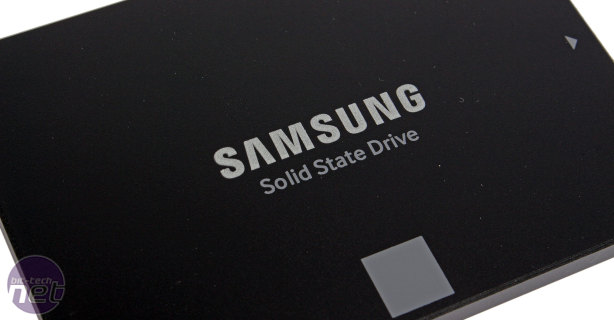
Samsung SSD 850 EVO Review (120GB, 250GB, 500GB & 1TB)
Manufacturer: SamsungUK price (as reviewed): £73.49 (120GB); £109.99 (250GB); £198.49 (500GB); £367.49 (1TB) (inc VAT)
US price (as reviewed): MSRPs: $119.99 (120GB); $174.99 (250GB); $309.99 (500GB); $574.99 (1TB) (ex Tax)
It's hard to believe that the Samsung SSD 840 EVO now launched almost 18 months ago. Said SSD is still a solid product, with good performance for client environments backed up by a powerful and intuitive software solution in the form of Samsung Magician. However, Samsung is never one to rest for long, and is now back with the SSD 850 EVO. The key difference is the use of 3D V-NAND, just as we saw with the SSD 850 PRO earlier this year. Samsung is still the only player with 3D NAND SSDs available on the market, and with this launch it is bringing the important technology to a lower price point – for some time Samsung has been ahead of the curve in this way thanks to having full in-house control over the NAND, controller, DRAM and firmware of its SSDs.
The launch pricing indicates that Samsung is not chasing the budget crown as it did with the SSD 840 EVO. That title still goes to the Crucial MX100; we suspect that reaching prices as low as that simply isn't viable with 3D V-NAND at the moment. However, this presents something of a problem for Samsung. Unlike professional level client drives (e.g. SSD 850 PRO, Plextor M6 PRO) designed for workstations and other such intensive workloads, pricing is often the most important factor for entry level ones like this and the MX100. For the vast majority of users in this bracket, all modern SSDs are now fast enough and have more than enough endurance. Samsung itself says that the SSD 850 EVO is designed for everyday computing experiences, but convincing everyday users to spend £110 on its 250GB SSD when they could save £30 and get Crucial's MX100 256GB could well be a tough sell, regardless of performance.
With that out the way, let's look now at the SSD 850 EVO family. It currently comes in one form factor: 2.5-inch SATA 6Gbps, which is still very much the de facto form factor for SSDs despite the emergence of support for SATA Express and M.2 with Intel's Z97 and X99 chipsets this year. We suspect PCI-E storage to really start taking off next year, so we wouldn't be surprised to see an M.2 version or similar then (the SSD 840 EVO has an mSATA range), but nothing is confirmed and for now it's 2.5-inch only.
Samsung is simplifying the range of EVO SKUs available to consumers and bringing it in line with the 850 PRO. Firstly, it has reduced the number of capacities from five to four, eliminating the 750GB model. Each capacity now only has a single SKU too, as there is no longer an optional desktop upgrade kit. All drives simply come with an installation guide and CD, and the drives themselves have a black metal casing, much like the 850 PRO but with a grey square on the front rather than an orange-red one.
| Samsung SSD 850 EVO | 120GB | 250GB | 500GB | 1TB |
| Max Sequential Read (MB/sec) | 540 | 540 | 540 | 540 |
| Max Sequential Write (MB/sec) | 520 | 520 | 520 | 520 |
| (After TurboWrite) (MB/sec) | 150 | 300 | 500 | 520 |
| Max Random Read - 4K QD1 (IOPS) | 10,000 | 10,000 | 10,000 | 10,000 |
| Max Random Write - 4K QD1 (IOPS) | 40,000 | 40,000 | 40,000 | 40,000 |
| Max Random Read - 4K QD32 (IOPS) | 94,000 | 97,000 | 98,000 | 98,000 |
| Max Random Write - 4K QD32 (IOPS) | 88,000 | 88,000 | 90,000 | 90,000 |
| (After TurboWrite) (IOPS) | 38,000 | 70,000 | 80,000 | 80,000 |
Peak performance is very relevant to client SSDs, where IO requests tend to come in single bursts rather than multiple, sustained sequences, and the table above lists some impressive figures. Maximum read performance is the same as the SSD 840 EVO, but peak write performance has effectively been equalised across the range, which benefits the two lower capacities in particular. For example, the 120GB model's maximum sequential write speed has increased from 410MB/sec to 520MB/sec. Its maximum random write speed at QD32 has also been bumped by 150 percent, while the 250GB model has improved here by a third as well. Finally, at 40,000 IOPS, maximum random write performance at QD1 is up by 20 percent for the entire range.
As with the SSD 850 PRO, Samsung is here using is 32 layer 3D V-NAND. This NAND, in which cells are stacked vertically and not just horizontally, enables higher density NAND chips and also has higher performance, endurance and efficiency than traditional 2D NAND; the only downside is that it costs a bit more to produce. The key difference between the NAND here and that in the SSD 850 PRO is the same as it was in the 840 series – the MLC NAND in the SSD 850 PRO can store two bits per cell, whereas the TLC NAND here means the SSD 850 EVO can store three bits per cell. This additional density is what allows Samsung to produce the same capacities at a lower price.
Unfortunately, Samsung continues to use tamper-resistant pentalobe screws, which makes opening the drives up very difficult. As such, we cannot comment on the NAND die size or package arrangement, as the only internal shots provided are mostly unhelpful renders as shown above.
With the SSD 840 EVO Samsung introduced TurboWrite to combat slow TLC write speeds, and the technology makes a return here. TurboWrite treats a fixed portion of the TLC NAND as SLC NAND (1 bit per cell) which makes writing much faster. All write requests first go to this buffer, which is flushed to the TLC during idle periods. If a write command exceeds the buffer, speeds will drop as the controller will only be able to write to the regular TLC NAND.
Thanks to the higher endurance of 3D V-NAND, Samsung is now offering a five year warranty with the SSD 850 EVO compared to three years before (the MX100 also has three years). This warranty covers 75TB TBW (total bytes written) for 120GB and 250GB drives, which is around 40GB/day over five years, and 150TB TBW for 500GB and 1TB models (around 80GB/day). Relative to the rest of the market, especially for value-oriented SSDs, these ratings are very high.
As 3D V-NAND consumes roughly half the power of 2D NAND, the SSD 850 EVO will have lower power consumption that the SSD 840 EVO. It also now supports the DEVSLP ultra-low power idle state, which is likely to appeal to laptop users. Samsung once again uses LPDDR2 memory for the drives' DRAM cache, which is 256MB (120GB model), 512MB (250GB and 500GB) or 1GB (1TB) in size.
Samsung has also developed a new controller for the SSD 850 EVO, the MGX. That said, the 1TB model still uses the older MEX controller
Samsung's Magician and Data Migration software packages continue to impress, making it very easy to utilise the SSD 850 EVO's features and to transfer existing Windows installations. RAPID Mode, which uses RAM caching to accelerate performance, is again supported and enabled with the click of a button and a reboot. The software can also be used to quickly and easily secure erase your Samsung SSD, and will also guide you through setting up one of the drives various encryption protocols – AES 256-bit, TCG Opal and IEEE 1667 are all supported.

MSI MPG Velox 100R Chassis Review
October 14 2021 | 15:04














Want to comment? Please log in.